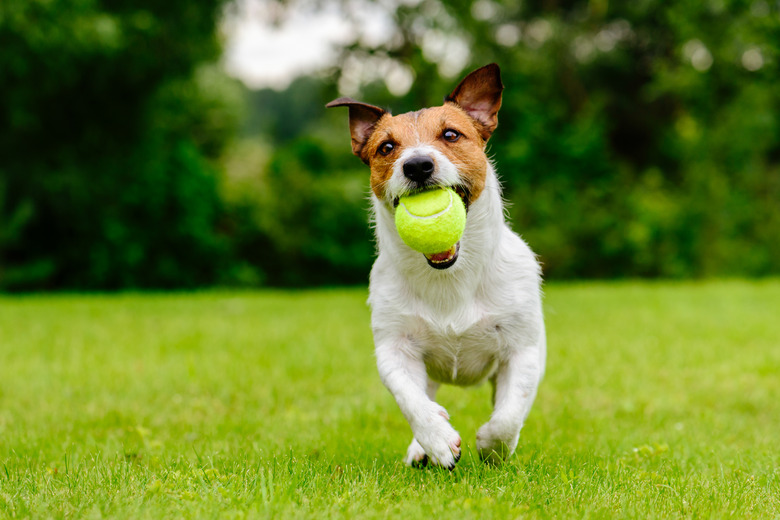The Best Landscaping For A Yard With Dogs
Even if Fido lives primarily indoors, your furry family member will spend some time outdoors. Dogs and landscaping don't always mix, though. Digging, eating plants or wearing paths in the lawn are a few of the potential problems dogs cause to landscaping. The landscaping — including plant selection and surface choices — can also be dangerous for canines. A few basic pet-friendly landscaping tricks can keep the yard looking attractive while keeping your dog safe.
Protecting Doggy Paws
Your dog tromps around the backyard every day with no protection for its paws. The types of materials you use on the ground can affect how safe the backyard is for your dog. Choose soft surfaces in the landscaping instead of rough, sharp surfaces, and shy away from pavement so your pet has protection from the heat.
Use cedar chip mulch, smooth stones and rounded pebbles for pups. Include plenty of green space as well. Grass stays cooler than pavement so it protects your pet's paws in the summer heat.
Creating Doggy Zones
Create special areas for your dog; if that area is appealing, your dog is more likely to hang out there and stay away from plants or other landscaped areas. For digging dogs, include a sand pit or dirt area in a hidden spot where digging is allowed. Add shade to provide a place to escape the heat. (Digging sometimes happens when a dog is hot and seeking relief.)
If your dog has no sense of boundaries, consider fencing off a pet-friendly area. A decorative fence won't detract from the landscaping but will provide limits. A spot for your dog to go to the bathroom is another key design element to protect the rest of the lawn from urine damage. A post he can mark is one option for a male dog. Train your dog to relieve itself in a certain spot so it becomes habit and makes cleanup a breeze.
Avoiding Toxic Plantings
Not all plants are compatible with dogs, and if ingested, toxic plants can cause serious health problems, including liver failure. Examples of common toxic plants include lilies (Lilium spp.), sago palm (Cycas revoluta, USDA zones 9-12) and daffodil (Narcissus spp.). How you care for nontoxic plants also may play a role. Fertilizers and pesticides contain potentially toxic chemicals if ingested.
Choose native plants that tolerate pests and diseases to reduce the need for synthetic chemicals. If you use chemicals, keep your pet out of the area until the chemicals dry. Read the container label for additional warnings and waiting periods before people or pets go near the treated plants. In addition, avoid cocoa hull mulch. The chocolate component in the mulch may cause vomiting, diarrhea, increased heart rate and seizures if ingested. Instead, use a shredded wood mulch.
Placing Plants Appropriately
Plant location is another thing dog owners should consider. Keep plants away from the perimeter of the yard because dogs like to walk along outside edges to patrol the area. Any plants in that area fall victim to your pet's paws. Dense plantings may discourage your dog from entering the garden, as will decorative fences. Another option is to create raised beds for plants so they are out of harm's way.
